Fantastic Firsts: “The Brave & the Bold” #28
The roster is comprised of icons. An Amazon princess who has traveled to man’s world on a mission of peace. An intergalactic cop charged with protecting Earth using a weapon powered by sheer imagination and will. The King of Atlantis and guardian of the vast ocean world. A Martian with fantastic abilities, marooned on the planet he’s pledged to defend. A speedster with the ability to race up the sides of building, across bodies of water, and through time itself. The greatest living detective, born from a crime that would inspire a lifelong mission against evil. The last survivor of a doomed planet and our world’s greatest protector. This is the Justice League of America.
In March of 1960 “The Brave & the Bold” #28 introduced comic fans to the JLA, a team made up of enduring characters who weathered the changing landscape of superhero comics in the late 40s and early 50s, as well as new incarnations of Golden Age characters: Wonder Woman, Green Lantern, Aquaman, the Manhunter from Mars, the Flash, Batman and Superman. The latter two were absent from that first iconic cover by artist Mike Sekowsky; five heroes dramatically facing down the monstrous alien starfish, Starro the Conqueror! Artists like Jim Lee, Alex Ross and Darwyn Cooke would recreate this memorable cover over the years.
For the first few years that the eventual “Justice League of America” title was published, Superman and Batman would rarely be featured prominently on the covers or in the stories. According to Brian Cronin, author of “Was Superman a Spy?: And Other Comic Book Legends Revealed”, “The Batman and Superman editors didn’t want the characters’ popularity diluted by appearing in other books regularly.” At the time “Brave & the Bold” #28 was released, DC’s comic book line was not made up solely of superhero comics. Of the ones that were being published, more than half of them featured Superman, Batman or both: “Action Comics”, “Adventure Comics”, “Batman”, “Detective Comics”, “Superboy”, “Superman’s Pal, Jimmy Olsen”, “Superman’s Girlfriend, Lois Lane” and “World’s Finest”.
“This changed a bit when the Bat-editor changed a few years into the series,” added Cronin on Twitter. “But it REALLY changed when the Batman TV show began.” He wasn’t kidding. The Dark Knight was featured so prominently on the book’s covers, beginning in March of 1966, that it looked as if it should have been re-titled “Batman and the Justice League of America”. “Batman”, produced by Bill Dozier and starring Adam West and Burt Ward as the dynamic duo, began in January 1966 on ABC and shot immediately into the top ten series on television.
The JLA’s origin is not chronicled in “The Brave & the Bold” #28; the origin story would be featured in “Justice League of America” #9. When the book opens, the seven members of the JLA have already formed and established their first base of operations, a cavern retro-fitted with computers, a library, and a hangar for Wonder Woman’s invisible Robot Plane (as it is referred to here). A Puffer fish named Peter informs Aquaman that a gigantic alien starfish named Starro has come to Earth to conquer the human race. Scouring the sea, Starro has located and transformed three other starfish into duplicates of himself. It’s pretty unimaginable. A Puffer fish is responsible for bringing the Justice League of America together for their first published adventure!
Two more JLA adventures would be featured in “The Brave & the Bold” before the team premiered in their own bi-monthly title in October of 1960. At the time, a team of superheroes was not a new idea, but it also wasn’t a staple of the medium as it has become today. By 1960, DC Editor Julius Schwartz was instrumental in bringing new incarnations of Golden Age characters such as the Flash, Green Lantern, Hawkman and the Atom back into the comics. Schwartz decided to revive the idea of the Justice Society of America, a team of popular heroes from the 1940s who first appeared in “All-Star Comics” #3.
But Schwartz’s new team of heroes would not be known as the Justice Society of America. “I hate the word ‘society’,” said Julius Schwartz about the formation of the JLA in an interview featured in the documentary “Secret Origin: The Story of DC Comics”. “It sounds like a social club. I want to use a better word, ‘league’. There’s baseball leagues, football leagues. Youngsters identify with leagues. Societies, they know from nothing. And when that came out, boom, boom, boom… it rocketed into space.” Enter prolific writer Gardner Fox and artist Sekowsky to bring the current DC heavyweights together for a single adventure.
From the opening page of “The Brave & the Bold” #28, Fox and Sekowsky throw most of the team right into the thick of things. Superman is smashing meteors on a collision course with Earth and Batman races across Gotham to bring a couple of unnamed rogues to justice. Their independent adventures prevent the two icons from helping the League bring down Starro and his deputies. The Flash vanquishes a tornado and Green Lantern pilots a jet as his alter-ego Hal Jordan. By comparison, the Manhunter from Mars and Wonder Woman are caught in the middle of considerably more mundane goings-on. John Jones readies for a much needed vacation from his detective work and Diana fends off advances from her longtime paramour. “As I told you before, Steve Trevor, I can’t marry you until my services are no longer needed to battle crime and injustice,” says the Amazon before receiving her Starro-related distress call from the JLA. Wonder Woman races towards her plane as Steve yells out, “I understand Angel! Hurry back!” We are immediately reminded that it is 1960.
Diana’s exchange with Steve isn’t a ringing endorsement for feminism, but the heroine has advanced from her original role on the JSA, which was chronicled in “All-Star Comics” #13 (1942). In the issue Hawkman says, “Wonder Woman, the members of the Justice Batallion feel that, even though you’re now an honorary member, we’d like you to act as our secretary.” Regardless of whether she’s being ordered to take meeting minutes or fending off the marital advances of her beau, there’s no denying the character’s resilience. Wonder Woman is one of the few DC characters who survived the 1950s, when Dr. Frederic Wertham was assaulting the comics industry and readers’ interests swayed from superheroes to westerns, romance and science-fiction stories.
Now that the five heroes have gathered at the JLA headquarters, Aquaman fills his teammates in on Starro and the location of the villain’s deputies. Knowing that they’ll need to split-up to take on their adversaries simultaneously, JLA Chairman Flash gives everyone their assignments. Green Lantern heads to the Rocky Mountains, J’onn and Wonder Woman jettison to Science City, and the Flash has Happy Harbor covered. Where does that leave Aquaman, a hero who has perennially had to overcome image issues? Flash gives the Sea King his orders, “Aquaman, you’ll patrol the sea deeps—in case Starro makes any more giant starfish—and alert us if you learn anything!” Translation: “Thank for the head’s up! We’ll take it from here!”
Aquaman first appeared in “More Fun Comics” #73 (1941) and, like Superman, Batman and Wonder Woman, he was one of the few comic book characters to last through the 1950s. Since his inception, Aquaman has never enjoyed a long comic book run, but there is something about the character that has prevented him from straying too far from the attention of comic fans. Mainstream audiences’ most memorable image is that of the hero riding atop two dolphins in the opening of the 1970s “Superfriends” cartoon, but comic enthusiasts are likely more familiar with the Aquaman who eventually led the JLA in the 1980s, or the grizzled warrior featured in Peter David’s 1990s series, or the back-to-basics take on the character whose mythos is constantly being expanded in Geoff Johns’ run. “It’s not hard to make fun of Aquaman because he talks to fish, like, it’s almost too easy,” said Johns in an interview with Maxim. “I could name probably a hundred characters as easy to ridicule, but I think it’s part of Aquaman’s charm is that at least people know who he is.”
Green Lantern soars to the Rocky Mountains for a battle with the first of Starro’s deputies. The giant starfish attacks a military jet and hijacks the atomic bomb it’s carrying, sending the jet crashing towards the mountains below. Emblematic of comics from this period, Green Lantern’s ring suddenly features a power that is really only a technique to advance the story. Hal thinks to himself, “Probing the minds of the Air Force men with my power ring revealed that Starro’s deputy stole the Atom Bomb the plane carried!” Before you can say “Hiroshima”, the deputy detonates the bomb and absorbs its destructive energy. Once Green Lantern catches up with the being, he gets a few shots in and defeats the starfish.
Green Lantern was another of Julius Schwartz’s reinventions. The original Green Lantern, Alan Scott, was introduced in “All-American Comics” #16 and his powers originated from magic, like so many comic book characters from the 40s. In October of 1959, just six months before “The Brave & the Bold” #28, a new Green Lantern was introduced to the world in the form of test-pilot Hal Jordan, whose power ring was bestowed upon him by a dying alien. By August of 1960, Green Lantern was given his own title and would grow to become one of DC’s most popular characters. Eventually, however, he would also become one of DC’s most tragic figures.
In 1993 DC Comics hired writer Ron Marz to take the character in a completely new direction with a story called “Emerald Twilight”. After Hal Jordan’s city is destroyed by Mongul and the Cyborg Superman, Hal goes on a rampage and kills all but one of the Guardians, the Green Lantern Corps, and his arch-nemesis Sinestro. Hal eventually becomes the villain Parallax as a new Green Lantern, Kyle Rayner, takes on the blood-soaked mantle. Hal and all of his victims would all return in “Green Lantern: Rebirth”, a 2004 mini-series written by Johns. The writer not only put everything back together, he developed a rich mythos for Green Lantern during his hugely popular seven-plus year run on the character.
Wonder Woman and the Manhunter from Mars are next up to take on the second of Starro’s deputies in the book’s most bewilderingly action-packed sequence. The creature grapples onto the Hall of Science in Science City (c’mon, Fox was too busy choreographing the mother of all Martian/Amazon/mutated starfish showdowns to come up with something more original) and lifts the entire building from its foundation in such a way that no part of it breaks off. The villain’s plan is to absorb the minds of the scientists within the structure. Using her invisible robot plane, Wonder Woman follows the soaring starfish as it glides away with the still perfectly intact hall. Meanwhile, J’onn uses his super breath to blow the meteor fragments from Superman’s space adventure (not a plot point is ignored here) to subdue the creature.
Transferred from the deputy that Green Lantern defeated, Starro’s minion now has the ability to blast the heroes using atomic energy. With her Amazonium bracelets, Wonder Woman protects herself from the beast’s nuclear blasts. Lacking similar protection, John rips lead panels from top of the Hall of Science to prevent his own atomization. Okay, then comes the craziest scene in the book. Yes, crazier than ‘ol Peter the Puffer Fish. With the Hall of Science loosened from the deputy’s grasp, Wonder Woman has her lasso tied to her robot plane as she somehow is anchoring herself to the Hall. She lands the building to safety, having ridden it gently into a field as though she were water-skiing. With the Hall and its inhabitants safe, the two heroes are free to easily take down the second deputy.
Since Wonder Woman was re-introduced by Greg Potter and George Pérez in 1987, there was little reason for Diana’s “robot plane” to be used much anymore because she was bestowed with the power of flight. Wonder Woman’s famous Amazonium bracelets were known originally as the Bracelets of Submission. She has since replaced these with the Gauntlets of Victory, crafted by Hephaestus from the Aegis Shield of Zeus.
J’onn J’onzz, the Manhunter from Mars, first appeared in “Detective Comics” #225 (1955). The green-skinned alien took the role of Detective John Jones when he found himself stranded on Earth. Of the original Big Seven, as this original JLA line-up has come to be known, J’onn J’onzz is the least familiar to mainstream audiences. It would be decades before he found a place amongst his contemporaries on the seemingly endless hours of popular cartoon adaptations of DC characters. That said, the DC writers who handled the character chose to assign the Manhunter with a wide array of super powers: flight, super-strength, heat-vision, invisibility, shape-shifting and telepathy. Other than a weakness to fire, J’onn J’onzz is a nearly unstoppable force.
Flash is ready to go it alone as he races to Happy Harbor to thwart the last of Starro’s deputies. Thankfully he won’t need to. Not with the JLA’s popular teenage sidekick Snapper Carr on hand to help (the kid’s nickname is derived from his constant thumb-snapping).* As Snapper treats his parents’ lawn with lime, Starro’s henchman has turned the residents of Happy Harbor into mindless zombies who follow their new leader to the town square. All but the young beatnik are under the creature’s spell. Once Starro’s deputy notices, it shoots a thumb-snap-ending energy blast at Snapper. Thankfully, for the would-be victim, Flash arrives in time to save the boy from being blown to Kingdom Come. The starfish makes a run for it, but Flash keeps a few steps ahead and takes the villain out with some fancy footwork. Realizing that Snapper holds the key to the alien’s defeat, the Flash brings the seemingly defenseless teenager to the final showdown with Starro the Conqueror.
The return of the Flash to comic books in “Showcase” #4 (October 1956) signaled the beginning of the Silver Age of comics. The original Flash, Jay Garrick, first appeared in “Flash Comics” #1 in January 1940 and became one of All-American Publications’ most popular characters; the Flash was also featured in “All Flash Quarterly” and “All-Star Comics” (as a founding member of the Justice Society of America). So it must have been a no-brainer to retool the character for a new generation of readers. Carmine Infantino designed the Flash’s dynamic red and yellow costume and writer Robert Kanigher wrote the hero’s early stories in the Flash’s periodic “Showcase” appearances.
“The Flash” #105 (March 1959) was the first issue of the new hero’s own series (the numbering continued from the original “Flash Comics” run from the 1940s). Other than Batman, Flash would find himself faced with one of the better gallery of rogues in all of comicdom. Captain Cold, Gorilla Grodd, the Trickster, Pied Piper, the Weather Wizard, Mirror Master and so many more colorful villains would terrorize Central City over the years, but they were thwarted time and again by the Scarlet Speedster. By issue #110 Kid-Flash would be introduced as young Wally West finds himself the victim of the same lightning bolt/chemical accident that turned his Aunt Iris’ boyfriend Barry Allen into the Flash.
DC Comics has a rich history of teenage sidekicks who would race into action with their heroic mentors. Robin, Speedy, Wonder Girl, Aqualad, and Kid Flash were among the most popular protégés. Fox and Sekowsky came up with Snapper Carr as a way of giving the team a junior mascot all its own. With no superpowers, those would come much later, Snapper was simply on hand to react to the JLA with beatnik slang (i.e. cat, daddy-o, far out, etc.). Snapper also found a place, not as a sidekick but as a Metropolis television reporter, on the 2001 “Justice League” animated series.
At last, with the three deputies beaten, it’s time for the final showdown between the Justice League of America and Starro. The space villain is now powered with atomic blasts, the intelligence of the greatest minds on Earth, and the ability to telepathically control humans. His final strike against Earth will be to set off the planet’s nuclear arsenal and absorb the destructive energy so that he may garner the power necessary to take over other planets. The JLA, accompanied by Snapper, arrive to put an end to Starro’s catastrophic plans. Green Lantern uses his ring as a spectroscope and identifies that the lime on Snapper is the cause of Starro’s inability to control the teenager. Green Lantern borrows lime from a nearby farm and the JLA pour the mineral onto the villain, swiftly ending his plans for world domination. Back at the JLA headquarters Snapper Carr, is made an honorary member of the team.
No in-fighting. No discord. No ill will. The Justice League of America is a team in every sense of the word and they work harmoniously with one another. The team is summoned to their cavern of justice, they listen patiently to Aquaman explain the dire situation, the Flash dispenses the group’s orders, each hero does their part to stop the villains, and the team regroups to take out the main baddie. Nobody argues and nobody disagrees. “The Brave & the Bold” #28 is a story about a group of heroes demonstrating what makes them super. The action is wall to wall and the morals are clear: good trumps evil every time.
Sekowsky is a superb storyteller who flips from scene to scene quickly in the opening pages as Fox explains, at breakneck speed, what each member of the JLA is doing. The artist draws each member of the team well, rendering all of their abilities clearly. The pièce de résistance is the book’s amazing cover. DC didn’t need to use Superman and Batman as a crutch because the cover promised some serious two-fisted action featuring an assortment of colorful superheroes. As silly as a giant starfish might sound, Sekowsky made Starro out to be quite the formidable adversary as he manages to keep all of the heroes, save the Flash, struggling in his tentacles.
“Justice League of America” #1 would hit comic books stands eight months after “The Brave and the Bold” #28, in November of 1960. DC was still primarily churning out Batman and Superman titles. The only other superhero comics being distributed by the publisher at the time, other than anthology titles like “Showcase”, featured other members of the League (those titles being “The Flash”, “Green Lantern”, and “Wonder Woman”). The book proved so popular that another publisher, envious of DC’s new hit series, demanded that staff writer Stan Lee develop a similar team book for the flailing company. In 1961, “The Fantastic Four” was introduced to the world and the company that would eventually become Marvel Comics began to win over new readers with characters like Spider-Man, the Hulk, Thor, the Avengers and the X-Men. How important is the success of “Justice League of America” to Marvel Comics? Lee’s recounting of these events open the Sean Howe book “Marvel Comics: The Untold Story”.
For 27 years “Justice League of America” became home to the world’s greatest heroes and a place to feature and popularize characters such as Green Arrow, Hawkman, the Atom, Elongated Man, Zatanna and a host of others before the book’s cancellation in 1987. The series had taken a creative turn in “Justice League of America” Annual #2 (October 1984) in a story titled “The End of the Justice League”. Aquaman disbands the current roster, moves the JLA headquarters to Detroit with a few former teammates, and recruits a new team of youthful heroes: Vixen, Vibe, Steel and Gypsy. Written by Gerry Conway and drawn by Chuck Dixon, these new young characters just didn’t click with readers and the series petered out.
“When we developed JLA Detroit, Chuck Dixon and I wanted to work with characters whose personal lives were relevant to their membership in the League,” said Conway in an interview with MTV Geek. “Most of the League’s big guns—Superman, Batman, Wonder Woman, et al—were beyond our ability to influence in any meaningful way. Because of the way the editorial system was structured at the time, nothing that happened to those characters in the JLA actually mattered; the stories had no lasting impact on the heroes. As a writer I found this frustrating. Creating JLA Detroit was an attempt to resolve that frustration.”
In 1987, writer J.M. DeMatteis and artist Kevin Maguire brought a new team of heavyweights to a new “Justice League” title. Since Superman, Wonder Woman and the Flash were recently given makeovers and just beginning new series of their own, they were unavailable to join a roster featuring former JLA-ers like Batman, Martian Manhunter, and Black Canary, united with Blue Beatle, Doctor Light, Captain Marvel, Mister Miracle and Guy Gardner. The light-hearted book was retitled “Justice League International” by issue #7 and proved to be popular enough to warrant a number of spin-offs (“Justice League Europe”, “Justice League Task Force” and “Extreme Justice”).
Peter David was tasked with retooling the JLA’s origin in 1988 with “Secret Origins” #32. Because Wonder Woman had gone through a post “Crisis on Infinite Earth” retcon (retroactive continuity) similar to Superman’s, it was no longer feasible that she could be a founding member of the team. Black Canary was retconned into Wonder Woman’s role in David’s retelling of the JLA’s first adventure. However, Wonder Woman’s role was re-retconned in issue #6 of “Infinite Crisis” when Superboy destroyed the mechanism Alexander Luthor was using to create a perfect Earth.
When called upon to reignite the series in 1997, writer Grant Morrison chose to go back to the basics with series artist Howard Porter. This time the book would simply be called “JLA”. Unfortunately, DC wasn’t enthusiastic about Morrison’s idea to reintroduce the original Big Seven to the roster. At this point in DC’s rich history both Barry Allen and Hal Jordan were deceased, replaced by the younger men who had since taken the mantle of the Flash and Green Lantern, respectively: Wally West and Kyle Rayner. “I had to ask them (DC Comics) to get those seven characters back together again,” said Morrison in an interview with Kevin Smith on the director’s “Fatman on Batman” podcast. “Before that it was just a bunch of also-rans. I had to really fight for it.” Morrison acknowledged that he took inspiration from the original Fox stories. “The Justice League is just your big seven superheroes that everybody knows and everybody loves and they’re all fighting together and it’s simple. Once we got into it, the fans really responded to it. They loved it.”
A new Big Seven was formed when DC Comics revamped their entire line of comics in late 2011. It was Johns and Jim Lee’s “Justice League” that rang in DC’s revitalized titles, referred to as the New 52. Comic shops hosted midnight sales events to herald in the book that would tell an all new origin of the world’s most famous super team. Former Teen Titan Cyborg replaced J’onn J’onzz in this mostly familiar line-up. “I didn’t want to do the same seven that everybody predicts,” said Johns at a San Diego Comic Con panel in 2011. “The Martian Manhunter, well you’ll see where the Martian Manhunter is at, in the storyline, the origin, but, I like Cyborg, I think he’s a great character. I’ve written him for years and years in the ‘Titans’ and ‘Flash’ and I really think he’s a modern-day superhero. I don’t know if anybody in here doesn’t have an online identity, but he’s online and offline all the time.”
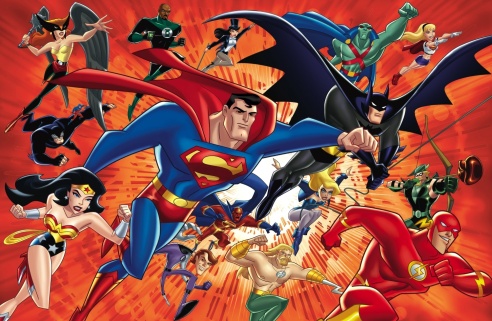
The Cartoon Network’s “Justice League” cartoons featured a mix of popular and obscure DC characters.
Animation has been, for the most part, kind in its multitude of JLA interpretations. Filmation produced a small number of “Justice League of America” cartoons in 1967 featuring Superman, Hawkman, the Atom, Green Lantern and the Flash. Aquaman appears in the opening sequence but the hero wasn’t used in any of the three episodes produced. “The Superfriends” would present a kid-friendly JLA that included four of the original team (Superman, Batman, Wonder Woman and Aquaman) but it featured dozens of famous costumed guest stars over its 13-year run (including Green Arrow, the Flash, Firestorm, Cyborg, Hawkman, Green Lantern, and many more).
There were minor tweaks to the Big Seven when the “Justice League” cartoon premiered in 2001. Producers opted to use John Stewart as the series’ Green Lantern and Hawkgirl instead of Aquaman. The Cartoon Network series took a dramatic tone and its team often quarreled about how they needed to go about achieving their common goals. After two seasons, the series was canceled and “Justice League Unlimited” took its place. “Unlimited” would feature the main team to a lesser extent in order to make room for a cavalcade of popular and fairly obscure DC characters.
Seven heroes came together to face impossible threats in the name of truth and justice. Sworn to protect a planet from forces that are evil beyond imagination, they have inspired legions in the decades to come. The Teen Titans, Infinity, Inc., the Outsiders, Birds of Prey, the Omega Men, Shadowpact, the Doom Patrol, the Global Guardians, the Metal Men, Young Justice, and Captain Carrot and his Amazing Zoo Crew all followed in the footsteps of the Big Seven. They are the world’s greatest super team. They are the Justice League of America.
*Editor’s Note: Snapper Carr was never popular.








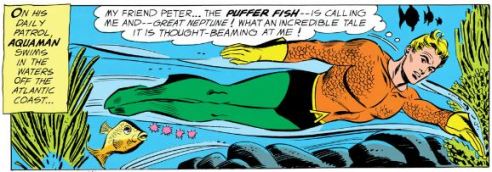
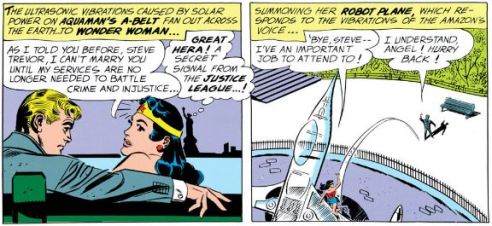
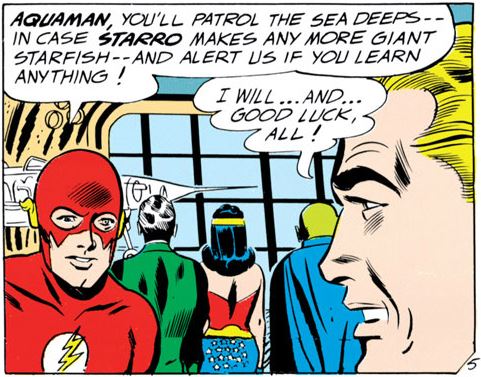
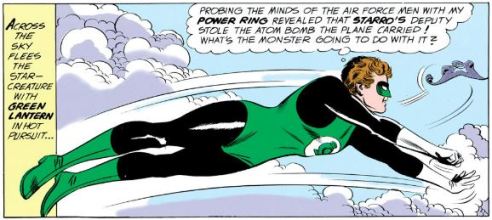
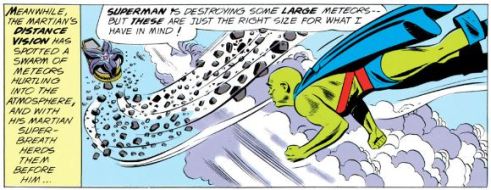
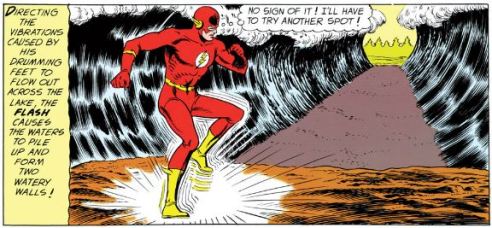
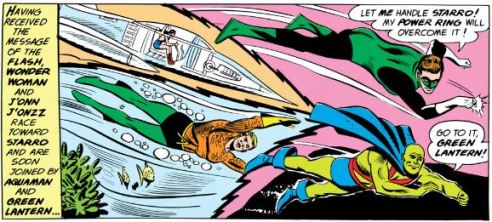

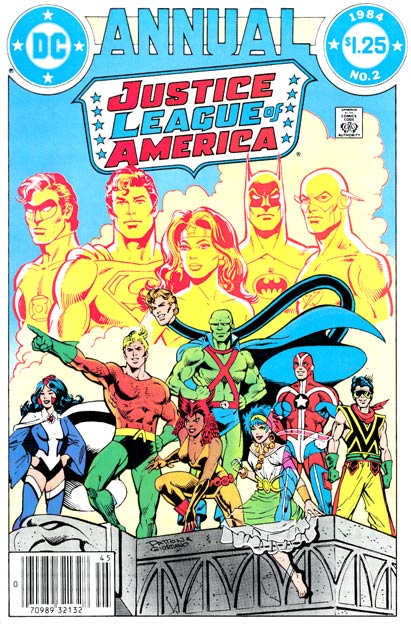
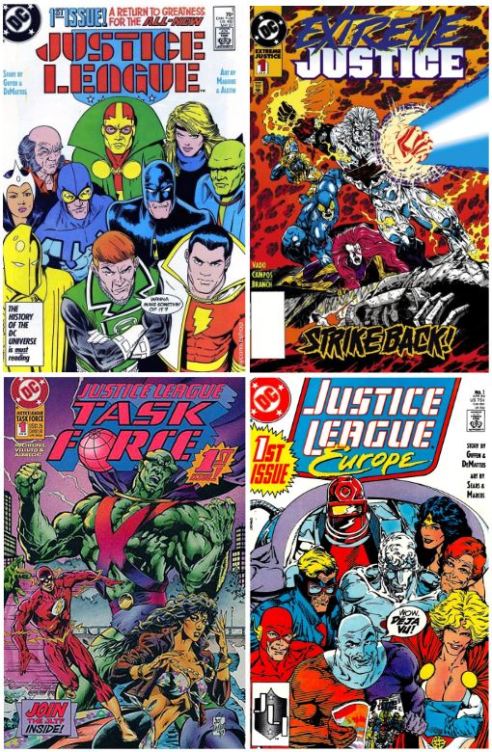
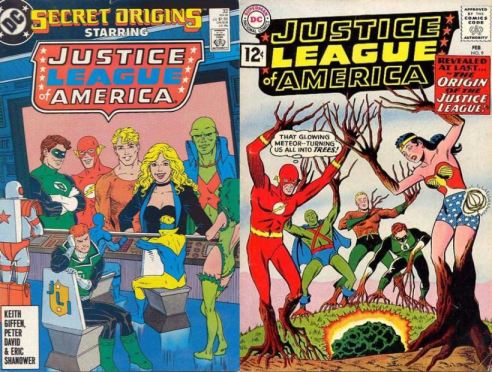
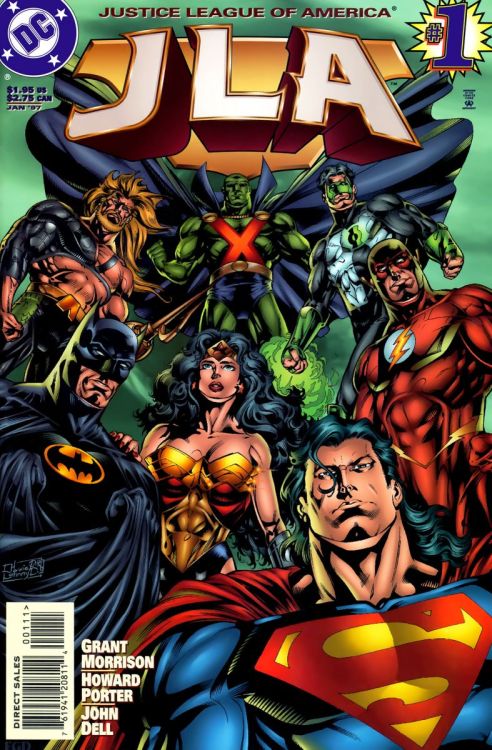
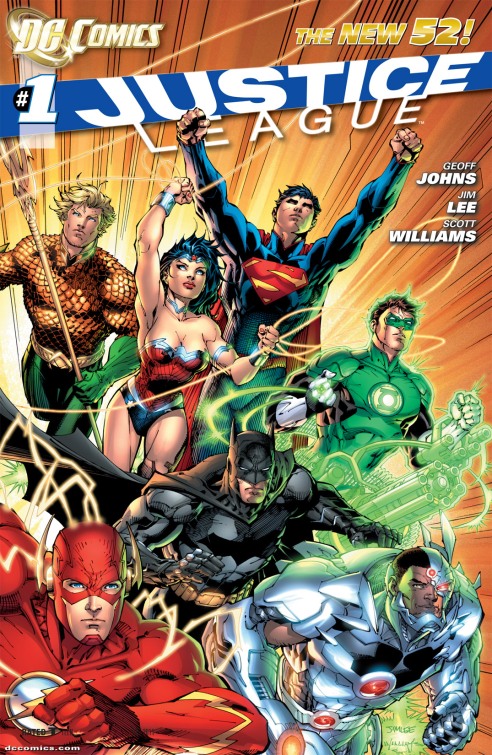
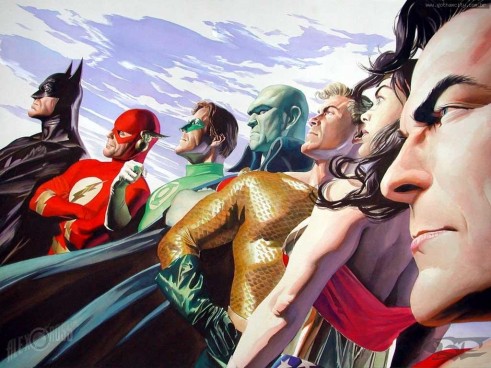
Leave a comment